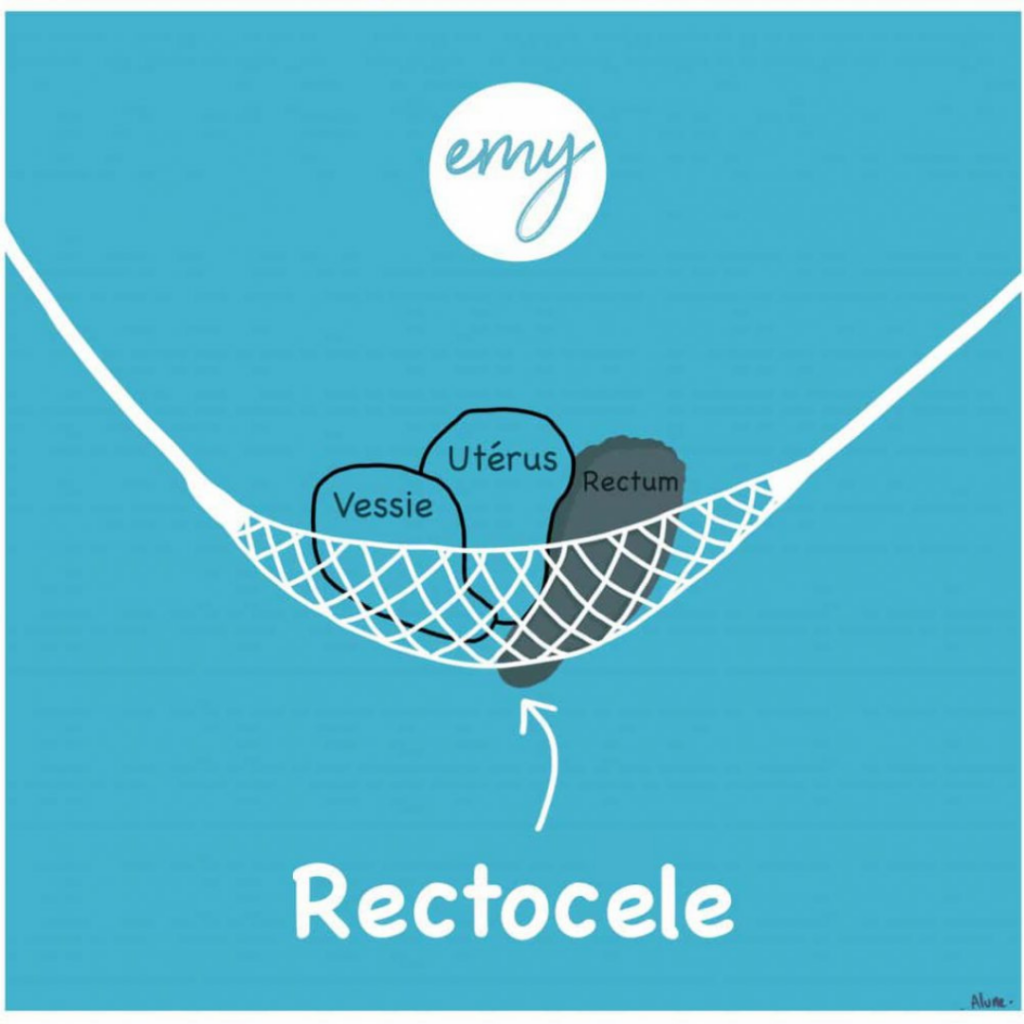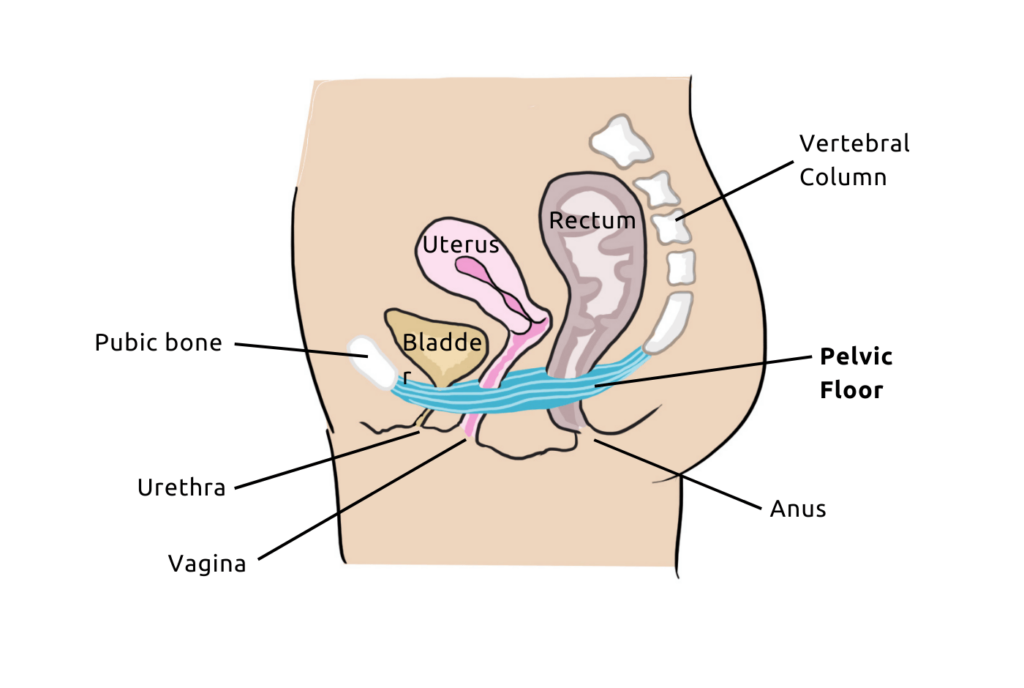
How to repair your Rectocele?
According to the US department of health and human services, atleast 5 million women suffer from a prolapse in the United states. Depending on the affected organ, there are different types of prolapse. Today we will talk about rectocele and how to repair it.
What is a rectocele?
Rectocele appears due to a weakness or strong mechanical constraints exerted on the posterior vaginal wall. Rectocele is defined by the descent of the rectum into the vagina. It should not be confused with a rectal prolapse which is an externalization of the rectum through the anus.

In case of rectocele, the hernia is located in the vagina. Depending on the severity of the condition, the rectal hernia can remain intravaginal, but it can also be found outside the vulva. It is classified into the following 4 grades:
1: the prolapse is intravaginal and the descent of the rectum is weak.
2: the rectum touches the vulvar orifice without protruding.
3: the prolapse extends beyond the vulva.
4: the prolapse is fully exteriorized.
What are the symptoms of rectocele prolapse?
Generally, women with retrocele experience a sensation of a vaginal “bulge”. This mass can cause discomfort during defecation, physical effort, or sexual intercourse.
In most cases, the feeling of heaviness can be relieved by lying down. Another symptom that may indicate a rectocele is a bowel disorder.
Patients often suffer from anal incontinence or constipation and may have difficulty evacuating stools properly (incomplete or fragmented bowel movements).
What are the causes of a rectocele?
The pelvic floor is one of the main culprits of this condition. The pelvic organs are held in place by a double system:
- A ligament system that suspends these organs .
- The pelvic floor that supports them.
Unfortunately, in prolapse, these two systems fail and there are no solutions to “tighten” the suspensory ligaments.

However, it can be extremely beneficial to strengthen the pelvic floor to ensure quality support for the pelvic organs (including the rectum).In addition to pelvic floor rehabilitation, it is also necessary to address other causes. Many factors influence the tone of the pelvic floor and can contribute to the weakening of the pelvic muscles.
Constipation
Chronic constipation can be an identified cause of rectocele. Indeed, if you suffer from constipation, the repeated straining can weaken your pelvic floor. This can lead to a difficulty evacuating your bowels when you need to have a bowel movement .Moreover, when you strain to pass stools, you also need to relax the sphincter. If this does not happen, you will have to make more efforts to expel your stools. As a result, you will put more strain on your pelvic floor through repeated pushing, possibly leading to a rectocele.
One or Several Childbirths
Vaginal childbirth is a common cause of rectocele. A traumatic rupture of the ligamentous attachments of the pelvic organs caused by childbirth can result in a rectocele.However, this can occur long after childbirth, especially if pelvic floor rehabilitation was not done or was simply inadequate.
Hormonal Changes
At the time of menopause, women’s bodies undergo numerous changes. Among these, the progressive decrease in hormones is the most difficult to manage. This decrease can weaken the pelvic floor muscles. This weakening can lead to a prolapse.
How to repair a rectocele?
A rectocele can be treated, but it should not be taken lightly. The choice of the most appropriate treatment for the prolapse takes into account several factors:
- the symptoms present;
- age;
- the patient’s overall health status;
- the grade of the prolapse… etc
Rectocele repair without surgery
If detected early, a few pelvic floor rehabilitation sessions can help relieve rectocele symptoms and avoid surgery. There are specific exercises to relieve a rectocele.
Pelvic floor rehabilitation as a first-line treatment
If you suffer from a rectocele, pelvic floor rehabilitation sessions using biofeedback will be prescribed by a health professional.
Biofeedback therapy is one of the most effective methods to improve rectocele symptoms at their onset. Targeted rehabilitation of the anal pelvic floor helps regain the sensation of bowel movements.
Pelvic floor rehabilitation also helps avoid surgical intervention and/or facilitate post-operative recovery if surgery is necessary. Rehabilitation sessions with the healthcare professional can be followed by pelvic floor exercises to be done at home.
Exercises for rectocele repair with the Emy
Regular practice of exercises will help maintain the benefits of sessions done in the clinic and prevent the worsening of your rectocele over the long term.
The Emy solution allows for doing adapted exercises for rectocele. This medical device offers a smart pelvic floor trainer that can connect to a mobile application. This app provides fun and varied exercise games, accessible from your smartphone.
This is an effective solution for performing exercises at home and staying motivated if you suffer from a rectocele.

Taking laxatives for constipation
For patients with bowel transit disorders, a laxative treatment may be recommended.
The aim is to soften the stool to alleviate the symptoms caused by rectocele. If the symptoms persist, then surgical intervention may be considered.
Surgical repair of Rectocele
Pelvic floor rehabilitation and/or laxative treatments are sometimes insufficient to treat rectocele. 10 to 20% of genital prolapses are managed surgically. The goal of surgical treatment is to restore anal function by correcting the anatomy of the wall between the vagina and the rectum. Only a healthcare professional can guide you on here. They can assess whether abdominal, vaginal, or anal surgery is most suitable. The placement of a sling is performed laparoscopically by opening the posterior aspect of the vagina, the perineum, or the anterior wall of the rectum. Some surgeons will perform an anatomical approximation of the levator muscles or the rectal wall. Others will prefer thin prostheses placed between the vagina and the rectum. A final technique involves removal. The part of the rectum that “falls” into the uterus is removed, and then the surgeon performs suturing of the rectal wall.
Who to consult for rectocele?
If you have any doubts about the appearance of any kind of prolapse, make an appointment with your gynecologist or general practitioner. They can advise you on appropriate treatment or refer you to a urologist, gastroenterologist, or proctologist for further examinations. To learn more about managing a prolapse, we invite you to watch this video on the subject, produced by a physiotherapist and a gynecologist.

Living with a Rectocele: Tips and Advice
Strengthening the Pelvic Floor Regularly
Many women live normal lives with a rectocele thanks to regular pelvic floor rehabilitation exercises and/or taking a laxative treatment. Ghislaine’s testimonial, who suffered from a rectocele caused by chronic post-operative constipation, is a good example. Regularly doing exercises with the Emy trainer helped her resolve her rectocele issue.

Adjusting Daily Activities
It is entirely possible to have sexual relations with your partner if you have rectocele. However, you may experience libido disorders or diminished orgasms.
But don’t worry, there are solutions to address this. Yes, it is possible to enjoy a fulfilling sex life with a rectocele!
Monitoring the Evolution of Symptoms
If you are living with a rectocele, you should remain vigilant and attentive to the appearance of new symptoms such as:
- Constipation or difficulty evacuating stools properly.
- Anal incontinence.
- Pain or bleeding in the rectal area.
- A feeling of heaviness in the lower abdomen worsened during defecation or exertion.
- Pain during sexual intercourse.
The onset of one or more symptoms could indicate a worsening of the condition. It should be reported promptly to your doctor to they can repair the rectocele.
Connecting with Others Living with a Rectocele
To connect with other people with a rectocele, consider joining an online forum. By discussing with other women affected by this condition, you will find comfort and valuable advice. Nothing beats a platform for sharing tips and managing this condition on a daily basis!
By typing “rectocele forum” in your search engine, you can easily find suitable platforms and connect with their members.
Many women live with a rectocele on a daily basis, you are not alone! So, do not hesitate to seek help from a healthcare professional to find the best solution for living with your rectocele.
Source: Recommendations from the French National Authority for Health – Genital Prolapse in Women: Therapeutic Management.





